Exclusive:Inside the Queensferry Crossing as you’ve never seen it before: Monorail hidden within bridge
This is the Queensferry Crossing – as you have never seen it before.
Unbeknown to the thousands of drivers who cross between Fife and Edinburgh daily, a monorail hidden beneath the carriageways runs the length of the bridge to provide fast access to the inside of the deck for maintenance.
Advertisement
Hide AdAdvertisement
Hide AdThese exclusive pictures and video by The Scotsman’s Lisa Ferguson show the shuttle in action, along with one of a series of multi-level maintenance gantries which enable access to every part of the underneath and sides of the deck.
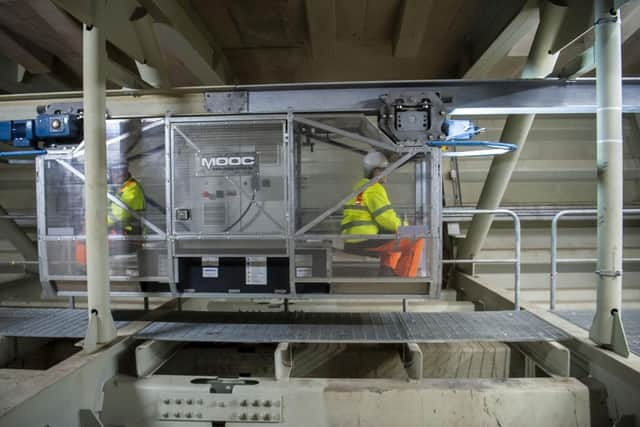

The Scotsman was granted the first media access by bridge managers BEAR Scotland to take a tour of features of the 1.7-mile-long bridge that have remained out of the pubic gaze since it opened six years ago.
The shuttle – nicknamed “The Rat” because it runs along a tunnel – can travel up to 8.5mph, allowing bridge staff, equipment and materials to be transported quickly along the structure, which saves hours of walking during regular routine inspections.
The monorail operates inside a box girder – a hollow rectangular tube – which carries the roadway, passing close to the crossing’s three towers. It has space for two people, who sit back-to-back, and is operated by controls inside the cabin.
Chris Tracey, BEAR Scotland’s south east unit bridges manager, said: “It’s mainly used for inspections, so the principal advantage is time – we can get to a work site quicker and work for longer, otherwise staff would have to stop earlier to walk back at the end of a shift.
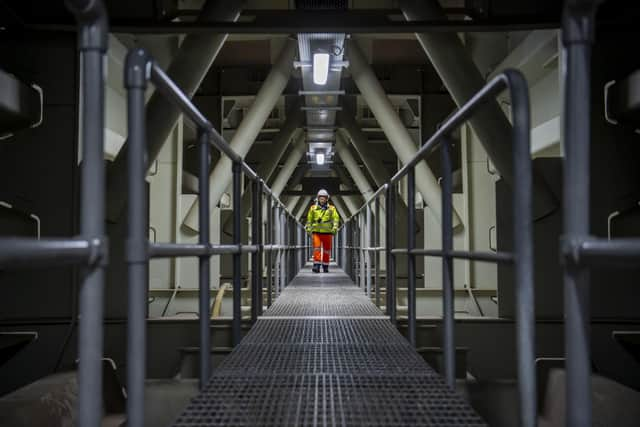

"You can put small hand tools in it, so they don’t have to be carried on foot. It is also safer, there’s no question about it. Anything that improves access is beneficial."
Walking over open-floor grating beside the shuttle’s track, which stretches as far as the eye can see, it feels like being in the open hull of a ship, albeit more than 160ft (50m) above the Forth. Orientation maps along the way prevent workers from getting lost.
The hollow tube also provides weather-proof conditions for maintenance, sealed from the outside world – apart from the surprise appearance of a moth spotted fluttering by.
Advertisement
Hide AdAdvertisement
Hide AdMr Tracey said: "All the plant and equipment is inside a controlled environment. On the Forth Road Bridge (FRB), everything is out in the open and exposed to the elements, which hampers work all the time. In really windy weather, you can’t do much much maintenance on the FRB, and that can be for months at a time, whereas you can plan to do more on the Queensferry Crossing.
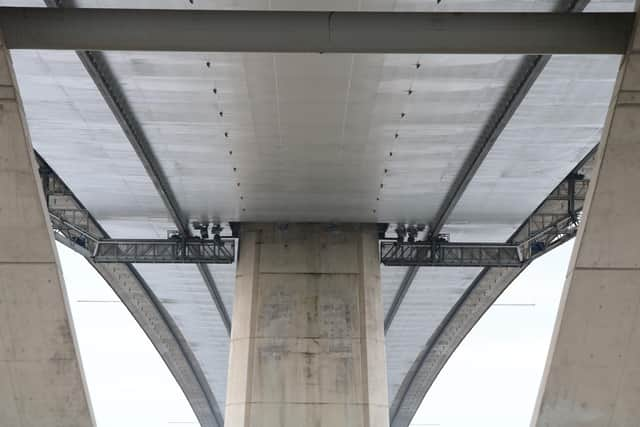

"In fact, some jobs are ideal work for the winter in poor weather on the Queensferry Crossing. Maintenance is so much easier.”
Elsewhere, there are six gantries which also run on monorails. suspended under the deck, to cover different sections of the bridge, such as for inspections of the “soffit” (underside). They can carry up to 20 people and are able to operate in winds of up to 35mph.
From a distance, the Queensferry Crossing appears pretty flat compared to the distinct curve of the Forth Road Bridge. But viewed from one of the new bridge’s gantries, there’s a quite different perspective, with a noticeable camber along the underneath of the deck.
Other hidden features of the crossing include a complex of offices and workshops at the south abutment – where it meets the land – with space for vehicles to drive in. It is also where some 2,200 sensors continuously check aspects of the bridge, making it one of the most monitored in the world.
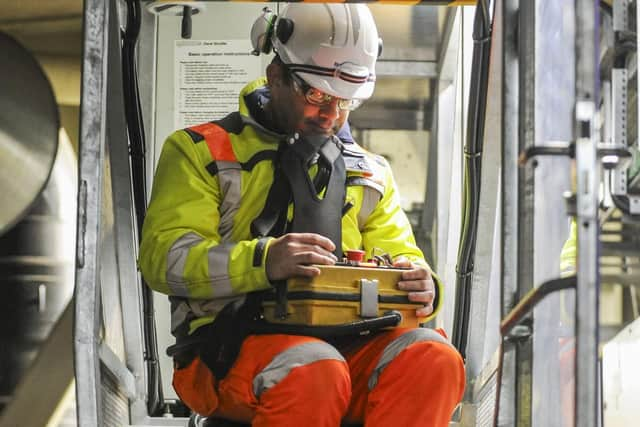

The complex, which is the bridge’s maintenance hub, is also among the only interiors of the bridge where traffic can be heard – audible as intermittent thuds as vehicles pass over the deck’s expansion joints above.
The crossing also provides easier access inside its towers than its adjacent sister, with larger lifts which can accommodate up to four people while only two can comfortably fit in those of the latter. They climb the equivalent of some 40 floors to reach the tops of the towers, which range from 663ft (202m) to 689ft (210m) above the water.
The centre tower is Scotland’s tallest free-standing structure, dwarfing the Forth Road Bridge, 164ft (50m) below. The Queensferry Crossing is also the UK’s tallest bridge and was the world’s longest three-tower, cable stayed bridge when it opened.
Advertisement
Hide AdAdvertisement
Hide AdMr Tracey said one of the £1.35 billion structure’s few maintenance issues so far had been more wear being detected than anticipated so early in its life in one of the bearings between the deck and a concrete pier south of south tower.
He said Transport Scotland was discussing with the Forth Crossing Bridge Constructors consortium, which built the bridge, as whether it should be replaced, potentially at cost to the latter, which still has several staff based there.
Meanwhile, Mr Tracey admitted it may prove impossible to solve the problem of ice forming on and then falling from the bridge’s cables, which has closed the crossing three times, the last one in 2021.
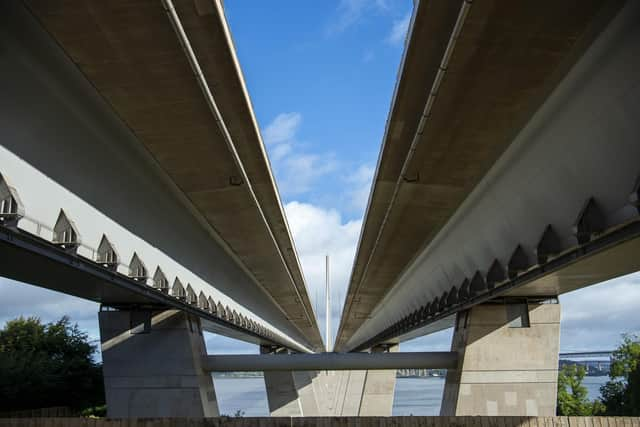

He said: “We have found it will be very difficult, if not impossible, to prevent ice accreting. Since we cleaned the cables, we haven’t had an ‘event’. But it’s too early to say that that’s the reason – it may just be the climate over the last couple of years has not been conducive to ice forming in such a way that would cause damage to vehicles.
"However, the evidence from lab trials did show that cleaning the cables had a beneficial effect.”
Mr Tracey said monitoring and weather forecasting had predicted ice formation “pretty accurately”, while newly-installed automated barriers would enable traffic to be switched to the Forth Road Bridge within half an hour once they were fully operational, should the crossing have to close again.
Comments
Want to join the conversation? Please or to comment on this article.